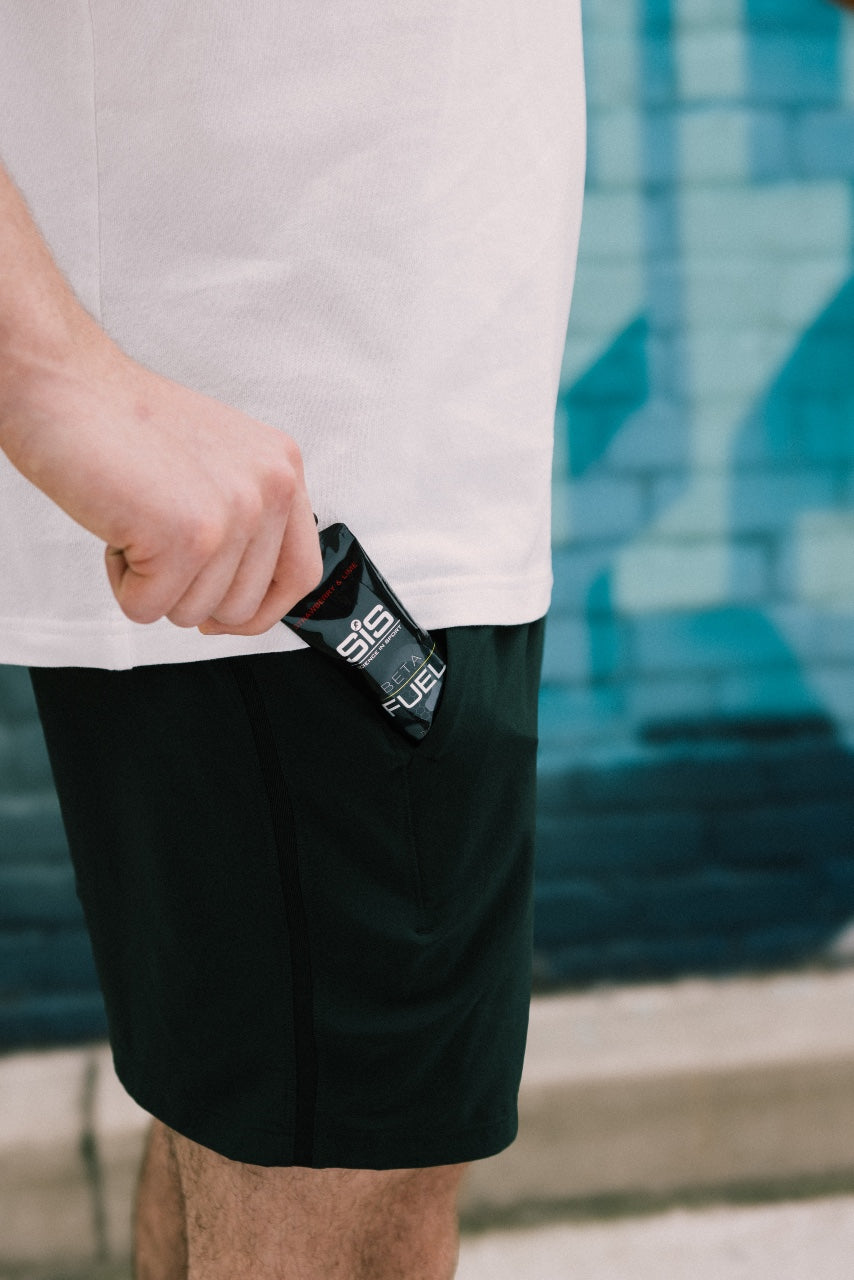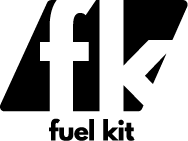
Energy Gels vs. Chews - Which Fuel is Best for You?
Share
If the Tour de France taught us anything this year, it's that carbs equal performance. The GOAT himself, Tadej Pogacar, reportedly downed a whopping 60-120 grams of carbs hourly to grind out his massive finishes. Ask any endurance athlete- whether a marathon runner, cyclist, triathlete, or ultrarunner -and they will tell you that fueling is as vital as training. When your body runs low on glycogen, fatigue sets in quickly. That's why dialling in your race nutrition early and sticking to a plan is essential for maintaining pace, power, and focus.
Two of the most popular options for on-the-go carbohydrates are energy gels and energy chews. Both are designed to provide quick fuel, but they look, feel, and even taste a little differently. So how do you know which option is right for you? In this article, we'll compare gels and chews head-to-head so you can confidently build a fueling strategy that fits your body and your sport.
What are Energy Gels?
Energy gels are concentrated carbohydrates encapsulated in easy-to-use packets. They are designed for rapid absorption and energy replenishment. Energy gels usually come in single-serve pouches that you squeeze directly into your mouth. Because they're semi-liquid, the body can digest and absorb them quickly, sending glucose into your bloodstream within minutes.
Picture provided by Maurten.
Different Types of Gel
Not all gels are the same. Here are a few varieties you'll find on the market:
Isotonic Gels:
Formulated with more water, making them easier to take without needing a big sip of water. If this sounds right for you, give the SiS Isotonic Gels a whirl.

SiS GO Isotonic Gel: $2.75 each
High-carbohydrate gels:
Designed to deliver 30-40 grams of carbs per packet, helpful for ultra-distance efforts or when fueling opportunities are limited. Try Sis Beta Fuel or Maurten 160 gel.


Hydrogel technology:
Newer gels that encapsulate carbs in a gel-like matrix for smoother stomach absorption. They promise less stomach upset and are beloved by the elites. If this is what you're after, stock up on Maurten 100 and 160 gels.

Natural and organic gels:
Made with real-food ingredients like honey, dates, or fruit purées. We have delicious fruity Huma Gel flavours for real-food lovers.

Caffeinated gels:
Provide both carbs and a dose of caffeine for an extra mental and physical boost late in the race. Most brands offer a caffeinated line of gels that range in dosage. A few customer faves include Gu Cola Me-Happy, Krono Maple Coffee, and Huma Raspberries.


Pros of Gels
- Lightweight and easy to carry.
- Deliver fast-acting energy.
- Widely available in a range of flavours and caffeine options.
Cons of Gels
- Sticky texture isn't for everyone.
- Flavour fatigue can set in during long events.
- May cause gastrointestinal issues if not paired with water.
- Some dislike their intense sweetness.
What are Energy Chews?
Energy chews are bite-sized, gummy-style carbohydrate blocks. Think of them as a functional version of candy formulated for athletes with balanced glucose and electrolytes. Because you chew them, digestion is slightly slower, providing a steadier stream of energy.

Picture provided by GU.
How They Differ from Candy
Unlike standard gummies, energy chews are designed with endurance fueling in mind. They typically contain a specific ratio of glucose and fructose, often with added electrolytes and sometimes with caffeine, so you're getting a product that is formulated for performance. But if you prefer to down a package of good old-fashioned gummy bears, go for it! They taste great and have a low price point. Just remember to pair saltier food items alongside your favourite candy.

Gu Energy Chews: $5.00 each packet

Bonk Breaker Energy Chews: $5.00 each packet
Pros of Chews
- Fun to eat and available in lots of flavours.
- Easy to portion out, take one or two servings at a time instead of the whole package.
- Gentler on the stomach for many athletes.
Cons of Chews
- It requires chewing, which can be difficult during strenuous efforts or at the end of a race.
- Bulkier to carry compared to gels.
- It's challenging to consume them quickly, which can lead some athletes to underfuel.
Head-to-Head Comparison
Convenience:
Gels win for speed- rip, squeeze, and go. Chews take more time to eat but allow flexible dosing.
Digestibility:
Some athletes find that gels cause stomach upset, especially when consumed without enough water. Chews tend to feel lighter on digestion but may be harder to consume while breathing heavily.
Hydration Needs:
Both products work best with water. Gels, in particular, often require a few sips to dilute the concentrated carbohydrates.
Situational Use:
- Gels are ideal for racing events that last less than 3-4 hours, where every second counts.
- Chews shine pre-race and during training rides, on the bike in a triathlon, or steady, steady-state runs where you have time to chew and enjoy variety.
Which Should You Choose?
The best option depends on your sport, race, and personal preference:
Marathon runners:
Typically prefer gels for their speed and portability. You can quickly down one at aid stations without breaking a stride.
Cyclists and those engaging in long training runs:
Cyclists and ultrarunners often use a combination of gels and chews. Chews offer variety and sustained energy, especially when you're out for hours and want something that feels more like food. Gels are easier on steady climbs or when the pace is intense. Like triathletes, cyclist and ultra-runners also typically mix in whole foods.
Triathletes:
Many triathletes also prefer a mix of foods — chews and whole foods, such as bananas, on the bike, when it's easier to eat, and gels on the run, when eating becomes a chore.
Ultimately, the correct answer is to experiment in training, and not on race day. Everyone's stomach responds differently. So testing different products during workouts is the best way to find out what works for you. Know that gels and chews are just two popular choices of the range of fueling options. Most often, athletes use more than one source of carbs. Carbohydrate sports drinks, whole foods like fruit and sandwiches, and energy bars are just some of the other sources of nutrition for an athlete on the go.
How to Incorporate into Your Fueling Strategy
Here's a simple framework you can adapt:
Shorter races (under 90 minutes):
Fueling may not be necessary beyond a sports drink.
Half-marathon to marathon (90+ minutes):
Aim for 30-90 grams of carbs per hour. Beginners should shoot for the lower end of the range while experts in the marathon distance may aim for the upper end. That could mean one gel every 20-30 minutes.
Long rides, ultras, or Ironman:
Mix gels and chews for variety. Even better, add some whole foods to the mix as well. For example, start with chews and food during steady riding, then switch to gels on the run when easy-to-digest nutrition is paramount. Some expert ultra-endurance athletes may push the envelope and aim for carb levels of 100-120 g+ hourly. Most athletes however, will find their needs met with 60-90 g hourly, depending on exercise duration and intensity.
For more on race day nutrition see this post from Gazelle Nutrition.
Hydration Tips
Always pair gels and chews with fluids. Many athletes use water or an electrolyte drink to ensure proper digestion and maintain hydration.
A Convenient Option
If you're unsure about how to mix and match, our Fuel Kit race-day nutrition packs combine gels, chews, and drinks into a single kit, so you have everything you need for training and racing - no guesswork required.
The Takeaway...
Both energy gels and chews are effective fuel sources for endurance athletes. Gels deliver fast, concentrated energy that's perfect for racing. Chews provide variety, flexibility, and a steady release of carbohydrates, making them ideal for training and long efforts.
There's no one-size-fits-all answer- the best choice depends on your body, your event, and your preferences. The key is to experiment in training so you feel confident and fueled on race day.
_______________________________________________________________________
Written by: Ashley Leone, RD, MSc, IOC. Dipl. Sport Nutr with editing from ChatGpt
Ashley is a sports and performance dietitian and the Founder of Fuel Kit and the Owner of Gazelle Nutrition Lab. Ashley has been a dietitian for over 25 years and holds a Master of Science degree from the University of Toronto, as well as a Diploma in Sports Nutrition from the International Olympic Committee.


